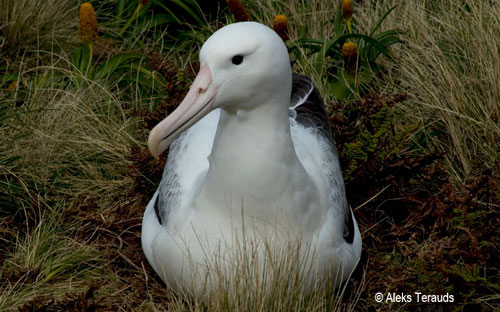The following extracts has been adapted from a paper by Andrés Domingo (Departamento de Recursos Pelágicos, Dirección Nacional de Recursos Acuáticos (DINARA), Montevideo, Uruguay) and colleagues published open-acess in the Bulletin of Marine Science as part of the Proceedings of the International Symposium on Circle Hooks.
"Circle hooks have been promoted as an alternative to traditional J-hooks in pelagic longline fisheries to minimize bycatch mortality and injury to sea turtles and other marine wildlife. We evaluated the effect of hook type (circle hook vs J-hook) on the catch and length composition of target and non-target species in the Uruguayan pelagic longline fishery, for both American- and Spanish-style longlines.
American-Style Longline: Thirteen albatrosses, including 11 Black-browed Albatross, Thalassarche melanophris and two Shy-type Albatrosses Thalassarche spp., were caught with J-hooks and five albatrosses (four Black-browed and one Southern Royal Diomedea epomophora) were caught with circle hooks. However, there was no significant hook difference.
Spanish-Style Longline: Six Albatrosses, four Black-browed, one Atlantic Yellow-nosed T. chlororhynchos and one Wandering Albatross Diomedea exulans were caught with J-hooks and only one Black-browed Albatross and two petrels (one White-chinned Procellaria aequinoctialis and one unidentified) were caught with circle hooks.
The bycatch of albatrosses is a major conservation issue in the Uruguayan fishery because their catch rates are among the highest reported worldwide. Although we observed a tendency for J-hooks to catch more albatrosses than circle hooks, this pattern was not significant. However, the potential of circle hooks to reduce albatross bycatch deserves further research."

Southern Royal Albatross by Aleks Terauds
Reference:
Domingo, A., Pons, M., Jiménez, S., Miller, P. Barceló, C. & Swimmer, Y. 2012. Circle hook performance in the Uruguayan pelagic longline fishery. Bulletin of Marine Science 88: 499-511.
With thanks to Sebastián Jiménez for the PDF
John Cooper, ACAP Information Officer, 15 August 2012

 English
English  Français
Français  Español
Español